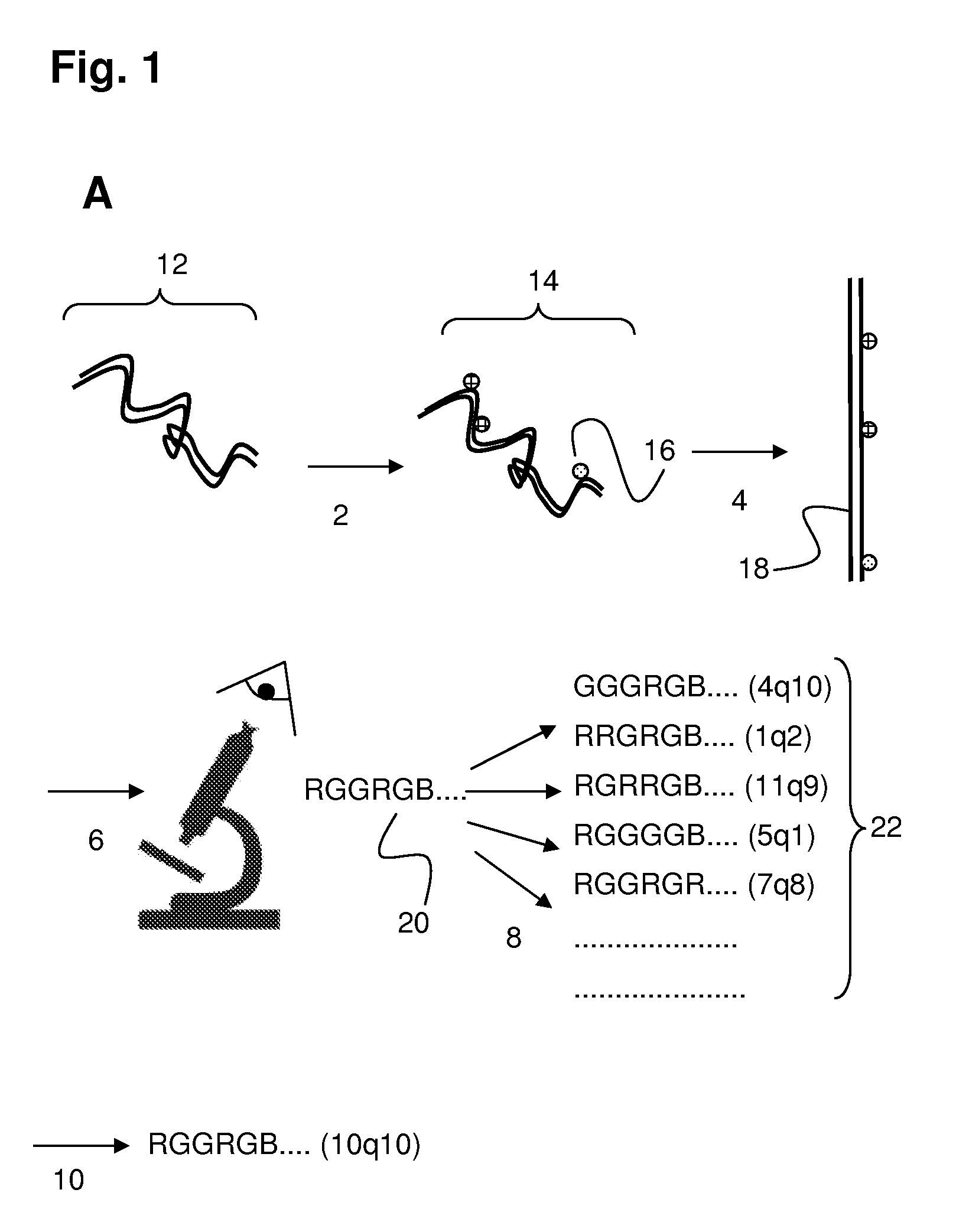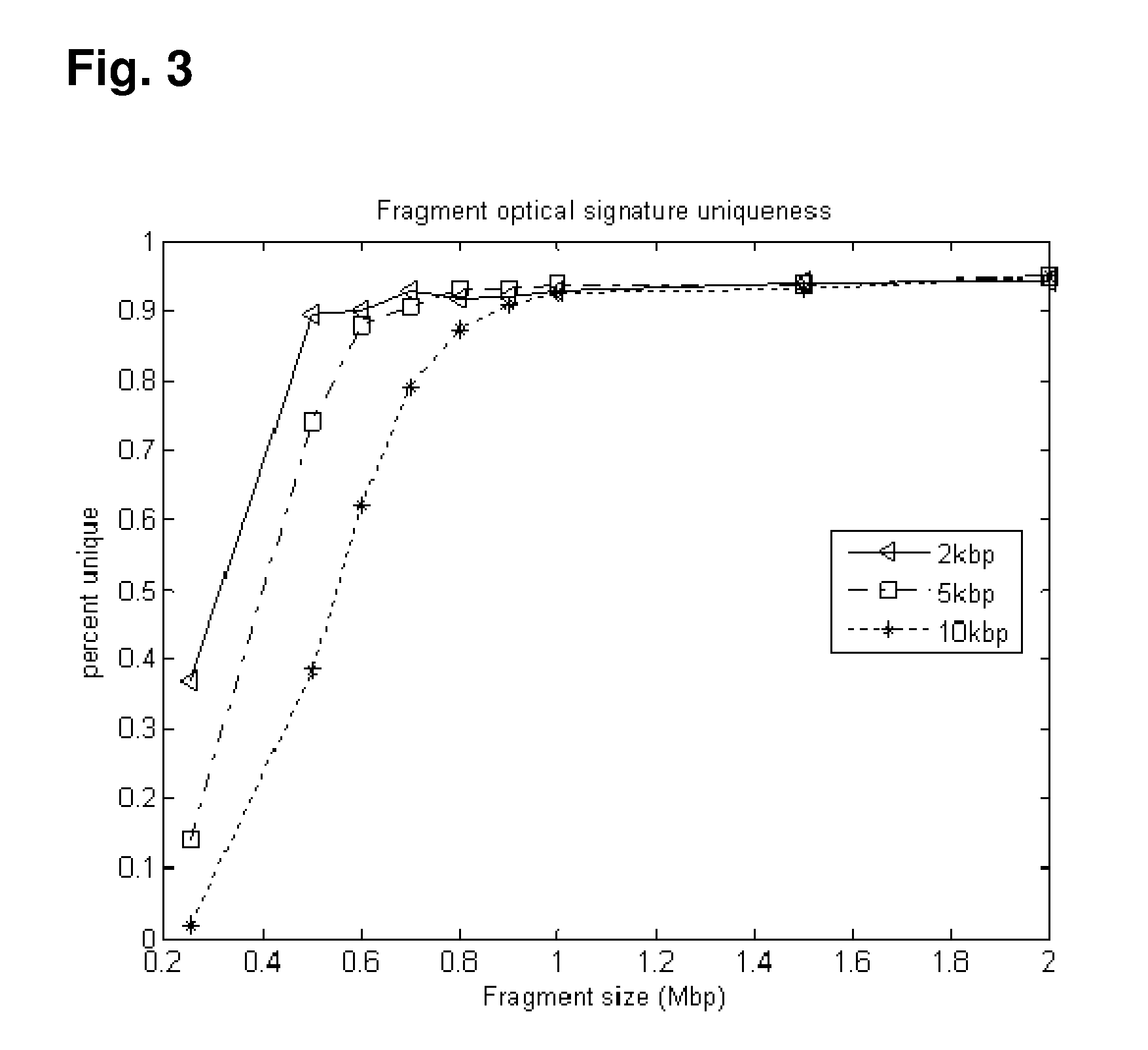Genomic coordinate system
a technology of genomic coordinates and coordinates, applied in the field of genomic coordinate systems, can solve the problems of difficult mapping onto a genomic context, low resolution or too focused for cytogenetic technologies such as fish and karyotyping to be useful on a genomic scale, and approaches are unable to easily measure structural rearrangements
- Summary
- Abstract
- Description
- Claims
- Application Information
AI Technical Summary
Benefits of technology
Problems solved by technology
Method used
Image
Examples
example
[0095]It is understood that the examples and embodiments described herein are for illustrative purposes only and that various modifications or changes in light thereof will be suggested to persons skilled in the art and are to be included within the spirit and purview of this application and scope of the appended claims. All publications, patents, and patent applications cited herein are hereby incorporated by reference in their entirety for all purposes.
[0096]Model
[0097]The (human) genome is tagged in-silico using the following two recognition sequences (and their watson-crick complements): ‘GCTCTTC’ and ‘CGAGAAG’ The experiment was carried out in accordance with the following steps.
[0098]Step 1
[0099]This in-silico tagging incorporates information petaining to the expected optical resolution of the measurement. Consecutive tags of the same color (e.g. R or G) were further annotated as having an unclear resolvability status if they are too close in distance to each other. An unclear...
PUM
| Property | Measurement | Unit |
|---|---|---|
| diameter | aaaaa | aaaaa |
| diameter | aaaaa | aaaaa |
| emission peak | aaaaa | aaaaa |
Abstract
Description
Claims
Application Information
 Login to View More
Login to View More - R&D
- Intellectual Property
- Life Sciences
- Materials
- Tech Scout
- Unparalleled Data Quality
- Higher Quality Content
- 60% Fewer Hallucinations
Browse by: Latest US Patents, China's latest patents, Technical Efficacy Thesaurus, Application Domain, Technology Topic, Popular Technical Reports.
© 2025 PatSnap. All rights reserved.Legal|Privacy policy|Modern Slavery Act Transparency Statement|Sitemap|About US| Contact US: help@patsnap.com



